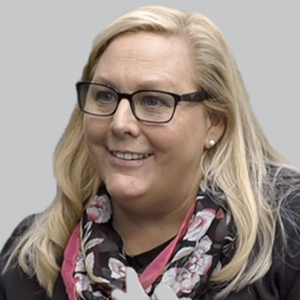Article
Using Floodlight in Multiple Sclerosis to Improve Patient-Recorded Data
Author(s):
The principal medical science director at Genentech spoke about how Floodlight works for physicians and patients and how it could improve care in MS.
Laura Julian, PhD, the principal medical science director at Genentech

Laura Julian, PhD
Currently, there are more than a dozen approved treatments for multiple sclerosis (MS), which has allowed for the research on the disease to begin to focus on biomarkers and other areas of interest and need, including the symptoms of the condition.
Physicians who treat MS have often told NeurologyLive that they feel fortunate to have the breadth of options they do, though having the option does not eliminate the difficulty of treating the condition. One of the major challenges is that disease progression is measured with magnetic resonance imaging (MRI). Although it is effective, it results in long periods between clinic visits, and thus leaves the window open for symptom worsening or other issues to develop.
To address this inability to more consistently measure the impact the disease has on patients with MS, Genentech has developed a smartphone tool for patients to track their disease progression in a number of areas, daily. To find out more about it and how it can improve care for both patients and providers, NeurologyLive sat with Laura Julian, PhD, the principal medical science director at Genentech.
NeurologyLive: What prompted the development of Floodlight?
Laura Julian, PhD: In the course of MS care, patients are generally seen once or twice a year, and what they bring into that clinic visit is usually measured by their neurologist and tracked by their neurologist. But a lot happens in the disease course in between those visits, and often times, what a patient is able to recall or report in that once-annual clinical visit isn't quite capturing their experience of the disease. What we wanted to try and do is figure out: how can we monitor patients in between those clinic visits and how can we complement what the neurologist does in the office?
We developed a tool that's called Floodlight. It's delivered on a smartphone—it's an app—and the goal of it is to focus on a few key areas of function. We know that MS can affect almost any domain of function, but a couple key domains of function that we wanted to look at were cognition, upper extremity function, and then ambulation or lower extremity function. We decided to start with those 3 key domains, and we built this tool to provide a way to actively measure those domains and performance.
What’s involved in the app for patients to record this data?
It's a series of active tests, meaning the patient is asked to do a series of tests that measure either cognition, upper extremity function, or lower extremity function, and the patient is asked to do it every day, if possible. What we want to try and do is get a really detailed footprint or a picture of what the patient's functionality in between clinic visits is. The patient is asked to do a series of measures every day, with the idea to get a nearly continuous measurement of function so that we can track trends over time. Then, the neurologists can potentially, hopefully, use that information in the future to help complement their visits.
Why were these domains selected for Floodlight?
We maintained domains of functional areas that were important to neurologists, but also important to patients because those are all areas where impairment in those domains can lead to disability, like leaving the workforce, for example. If you're having trouble with your upper extremities, if you're having trouble with your hand-motor function, it's very difficult sometimes for patients to maintain their usual work life. We wanted to focus on those kinds of areas that were really important [to patients].
What we experience in the clinic is that patients want to track their function in all kinds of different ways. I've had the experience where patients are bringing in an Excel spreadsheet of how far they walk that day. They're bringing their activity monitoring data, they're bringing their online cognitive testing data, they're bringing in their food diaries. Patients want to try and understand what their day-to-day functioning is going to look like in the big picture.
It can create a really frustrating clinical visit when a patient is coming in with their data, that they've worked very hard to collect, and the physician or the clinician doesn't really know how to consume that data. It's not in the language that a physician can understand. We want to ask the question of what if we can help a patient track the domains that are important to patients and physicians? What if we can make that consumable by both the patient and the physician? That's kind of where we headed, in an aspirational sense. What if we can create a monitoring tool that can be looked at by both the physician and the patient and what if it's going to help drive the next clinical decision in the future?
Transcript edited for clarity.




